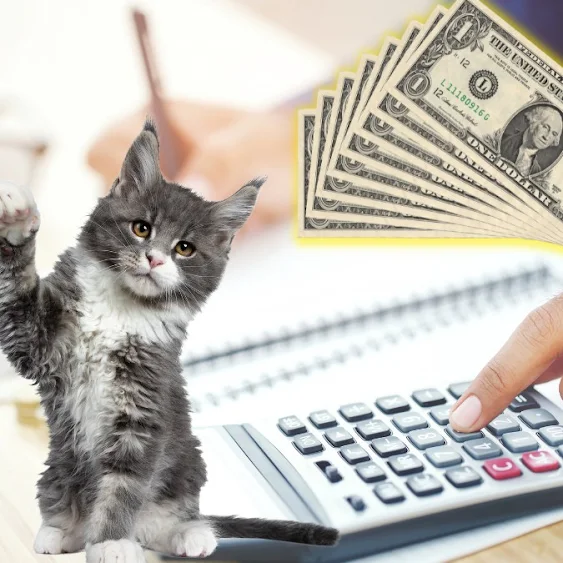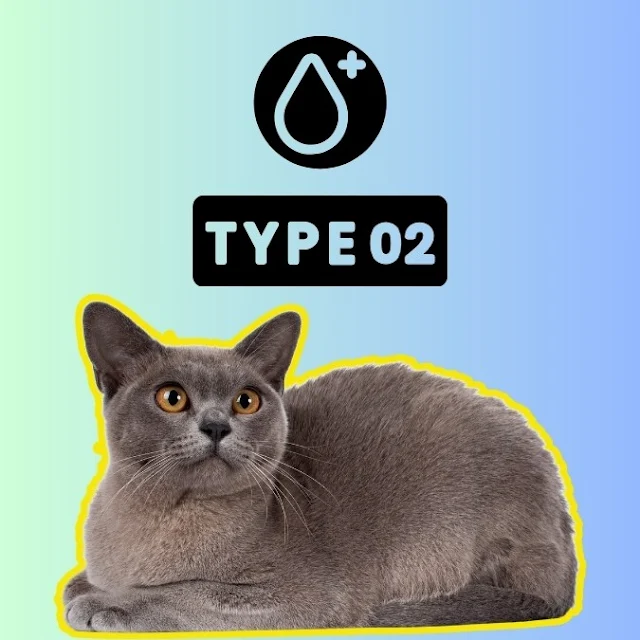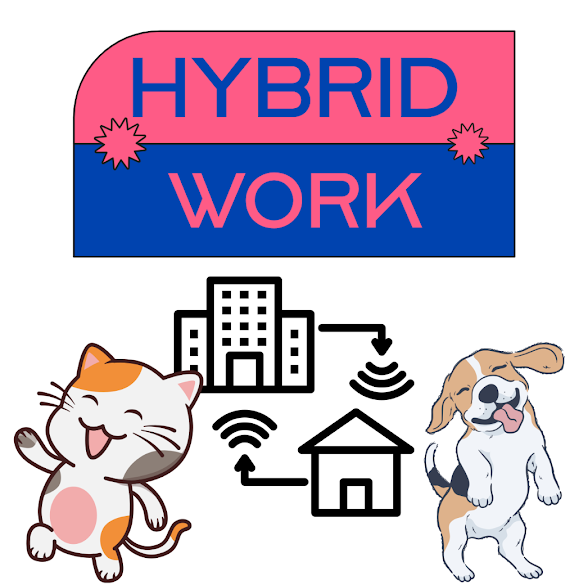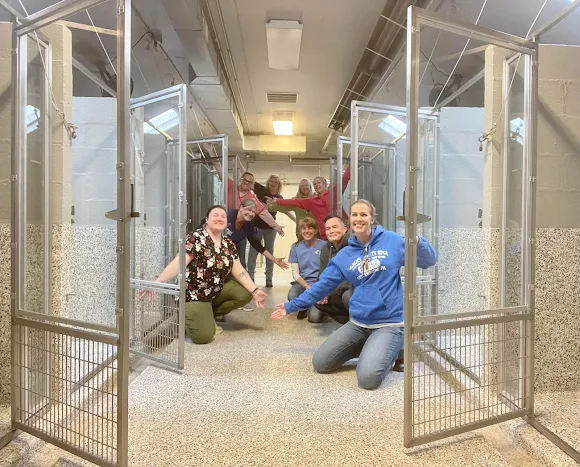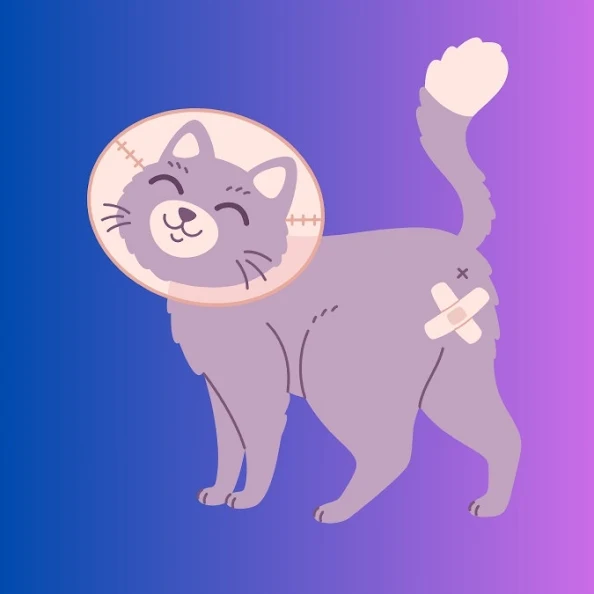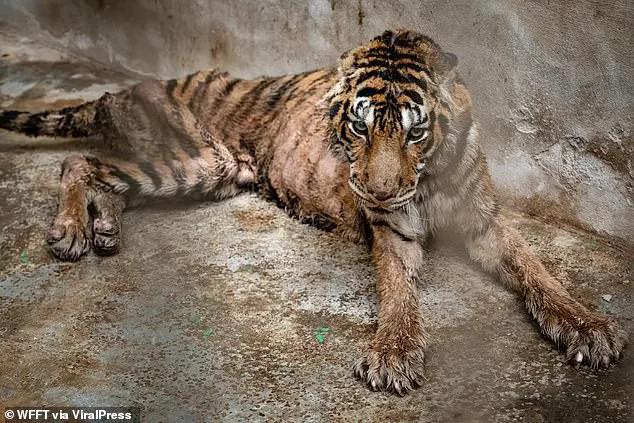NEWS AND OPINION. THIS IS AN OP-ED. I VOICE MY OPINION: For an animal advocate like myself and there are many millions of others the news that the Vietnamese restaurant that killed 300 cats a month to make cats soup has closed for good is the best Christmas present they could have.
This restaurant was a blot on the animal welfare landscape. They drowned 300 cats a month to make cat soup and presumably other cat meat meals. Can you imagine that? Drowning 300 cats a month? Every act an act of gross cruelty multiplied by 300 in a 30 day period which is 10 acts of gross cruelty every day against innocent animals.
And the people who did it had no qualms about it at all. Not an inkling of conscience. Nothing, nada, zero. The brain was dead. Or perhaps I am wrong and they did grow a conscience (see below).
Education
Actually, I think this is about education. I think the owner of this restaurant learned through the Internet and through the Humane Society that stealing people's pets and cruelly killing them and then eating them was immoral, wrong and entirely inhumane. It's about education ultimately. If you want to stop the cat meat trade then you need to educate people.
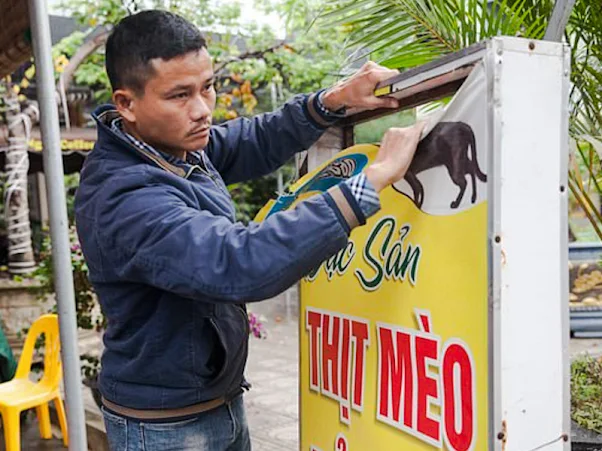 |
| Pham Quoc Doanh, the restaurant owner tears down the signage on the closure of his cat meat restaurant. Image: Daily Mail. |
Internet and sites like this and news media educate
This restaurant has been in the news quite a lot recently and I'm delighted that the news media are picking up on cat meat stories from Asia. I know this is a cultural thing and I know that we have to be sensitive about cultural differences and I try to be. We have to be sensitive and I understand that but when a culture fosters animal cruelty I think it becomes a universal issue and I also think under those circumstances we have a right to criticise.
I believe that anybody anywhere should do their best to stop animal cruelty by anybody anywhere.
This was the Gia Bảo restaurant in Thai Nguyen city, in the country's northeast. It was a profitable enterprise. Where did the cats come from? The Daily Mail says that they were "likely including stolen pets". They were drowned in a bucket one after another the newspaper says. Horrendous. Don't dwell on that thought.
The business was run by a 37-year-old man called Pham Quoc Doanh who took to this horrendous business because she was struggling to feed his family selling "other normal food and drinks". He's the man in the picture above.
He discovered that there was no other restaurant in the area where he lived selling cat meat so he decided on that type of business. No issue in his mind about animal cruelty by the way? And I am sensitive to the fact that he was struggling to survive. That is one aspect of the cat meat business. He had to find a way to feed his family and sometimes we have to give up on principles.
However, putting criticism aside, he appears to have changed his mind because he reached out to the Humane Society International which has been campaigning for some time to stop the cat meat trade in Vietnam. The Humane Society offered him a one-off grant to change businesses to a grocery store. Perhaps he had seen the negative publicity and experienced falling trade?
He took up the offer and the picture you see on this page is him symbolically tearing down the signage outside his restaurant to begin a new business and a new way of life.
He said that he became upset with the cat meat business. These are his words:
"For a while now I have felt a genuine desire to leave the cruel cat meat business and switch to something else as soon as possible. When I think of all the thousands of cats I've slaughtered and served up here over the years, it's upsetting."
He added: 'Cat theft is so common in Vietnam that I know many of the cats sold here were someone's loved family companion, and I feel very sorry about that.'
Well, those words warm my heart in one way - his change of heart but he has committed horrendous crimes for a long time. And my eternal thanks to the Humane Society International which is doing such great work. It must have been a real struggle to encourage this man to do, what I would regard to be, the right thing.
The Daily Mail says that about 1 million cats are killed annually for their meat in Vietnam. I think you'll find that about 10 times that number is killed in China for the same purpose.
Vietnamese no longer believe in the cat meat business
Remarkably, the newspaper tells us that 71% of Vietnamese people living in Vietnam are in favour of a ban of cat meat. So perhaps his business was beginning to lose trade anyway. He found a way out.
We know that many domestic animals i.e. people's pets including stray cats are stolen for the cat meat trade. The same, by the way, applies to dogs in China and other Asian countries.
Education about superstitions
And you might know this but you might not: people who eat cat meat believe that it carries health benefits such as alleviating arthritis or that it has aphrodisiac properties. Sadly, I have to say that no science supports these views. It is all superstition; a superstition which results in mass cruelty against millions of companion animals. It is simply intolerable to any decent-minded person.
Massive amount of theft
The newspaper also tells us that 87% of people in Vietnam have had their pets stolen for the cat meat business or know of somebody who's pet was stolen.
That's another topic: the theft of domestic cats. The cat meat business is not only causing mass animal cruelty but mass criminality. Clearly nobody has been prosecuted for theft even though it happens up to a million times a year. This points to a lack of enforcement of criminal legislation in Vietnam because theft must be a crime in Vietnam. It begs the question as to whether animal cruelty is a crime in Vietnam. I would have thought that it was but once again there is a lack of enforcement.
The cats that were at the restaurant have been rescued. They were traumatised and they have been vaccinated and checked over for health issues and treated by veterinarians after which they will be put up for adoption and rehomed.
The companion animals and engagement programme manager of Humane Society International in Vietnam said:
"We are thrilled to be closing down our first cat meat trade business in Viet Nam, and hope it will be the first of many as more people like Mr. Doanh turn away from this cruel trade."
A big pat on the back to this man or woman. Let's hope that this cat meat business closure becomes a catalyst for similar events across Vietnam and in the wider region.
P.S. please forgive the occasional typo. These articles are written at breakneck speed using Dragon Dictate. I have to prepare them in around 20 mins.
